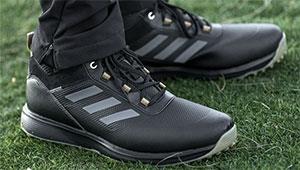
The Rules of Walking
Let's start with the USGA rules. The general rule covering transportation during a match is clarified by Decision 33-1/8 "Use of Golf Carts in Competition," which says that a player may use a golf cart during competition "unless such equipment is prohibited in the conditions of the competition," which are established by the committee overseeing the competition, as specified in rule 33-1.
In Appendix I-Local Rules: Part C: Conditions of the Competition, Rule 9, Transportation, the USGA specifies that "If it is desired to require players to walk in a competition, the following condition is recommended: 'Players must not ride on any form of transportation during a stipulated round unless authorized by the committee.'"
Penalties for failure to walk when the use of a golf cart has not been authorized are imposed by deducting holes, adding strokes, or--if the player does not cease using the unauthorized transportation immediately--disqualification.
But, outside of the rules, some favor walking and some don't. Here's why.
In Favor of Walking
Audubon International, seeing the impact of golf courses on nature conservation and seeking a way that golfers and conservationists could work together, designed the Audubon Green Golfer Pledge, which the USGA supports by including it on the USGA site.
The Audubon Green Golfer Pledge has eight tenets summarized here:
o Repair ball marks and replace divots to keep the course playable.
o Walk when possible to both promote physical fitness and protect the environment.
o Favor true ball roll over speed.
o Avoid environmentally sensitive areas during play.
o Dispose properly of trash and recycling.
o Appreciate the game as being integrated with nature and enjoy any wildlife you see.
o Educate other golfers about environmentally responsible golf.
o Encourage the golf course owners to be environmentally responsible.
In terms of general fitness as well, walking as an exercise has been highly praised and connected to longevity. So what's not to like?
Opposed to Walking
Sometimes, golfers aren't even allowed to walk. Keeping things flowing smoothly and increasing the number of golfers able to play in a day leads some golf course managers to mandate golf cart use for everyone, at least for certain portions of the playing day.
In addition, walking and carrying your clubs may not be good for your golfing skills. A 2008 study that, admittedly, was both a simulation and studied only seven golfers found that golfers who carried their clubs for the six miles of the simulated eighteen holes had diminished swing performance by the end of the session.
Specifically, the researchers found that "Over time, golfers were less able to achieve a weight transfer to the lead leg at ball contact, which was directly related to the golfers' club head velocity. The lead knee and lead ankle angles at the top of the swing were also affected by time, which had an influence on performance."
Even though the study has limitations, the idea that that walking six miles, either carrying a bag or pushing or pulling a cart, could potentially have a significant effect on a golfer's swing seems logical. So, particularly if a golfer is prone to the types of swing issues that might be exacerbated by the changes that the study found, choosing to ride rather than walk might be a better choice.
Or, you could do what they do at the Masters: have a caddie carry your clubs.
 See more golf tips or find golf camps near you.
See more golf tips or find golf camps near you.
Higdon, N. R., Dugan, E. (2008). Effects of 18 holes of simulated golf on the performance of recreational golfers. Medicine Science in Sports Exercise, 40(5), S379. Retrieved from http://journals.lww.com/acsm-msse/Citation/2008/05001/Effects_of_18_Holes_of_Simulated_Golf_on_the.2286.aspx Mackay, J. (n.d.) Take the pledge for greener golf. Retrieved on April 19, 2011, from http://www.usga.org/Content.aspx?id=26173 USGA. (n.d.) Appendix I: Rules and decisions. Retrieved on April 19, 2011, from http://www.usga.org/bookrule.aspx?id=14322 USGA (n.d.) 33-1/8 Use of golf carts in competition. Rules and Decisions. Retrieved on April 19, 2011, from http://www.usga.org/bookdecision.aspx?id=14319








Discuss This Article